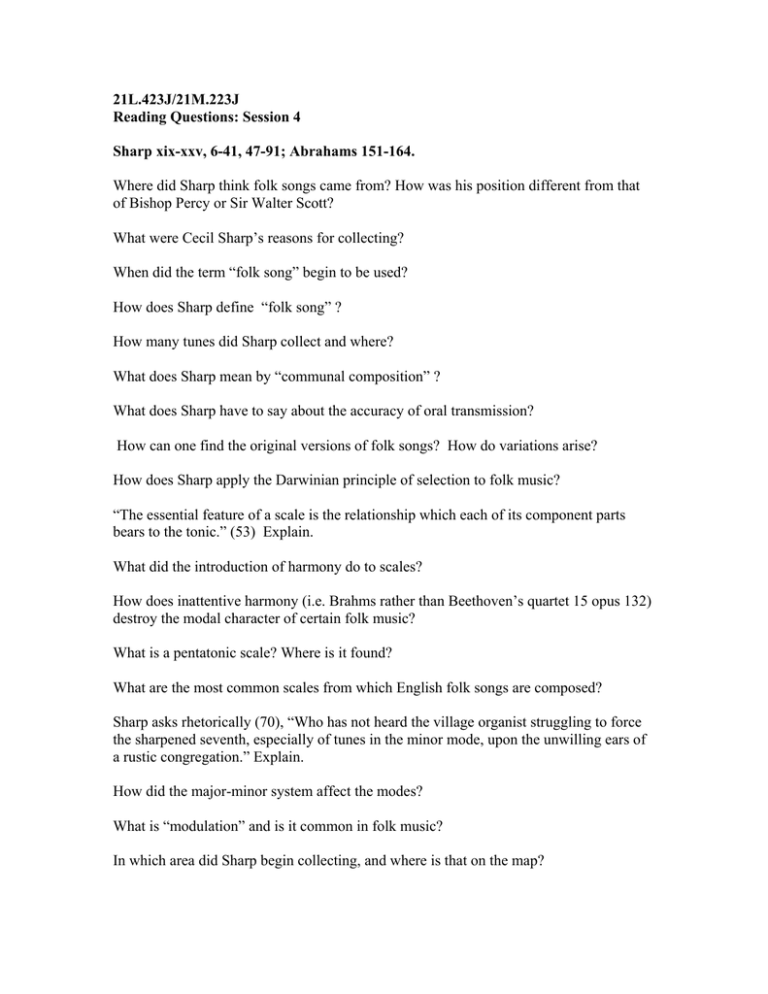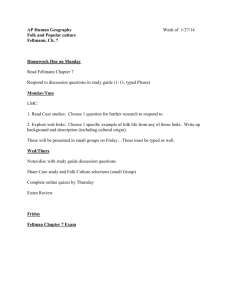21L.423J/21M.223J Reading Questions: Session 4 Sharp xix-xxv, 6-41, 47-91; Abrahams 151-164.
advertisement

21L.423J/21M.223J Reading Questions: Session 4 Sharp xix-xxv, 6-41, 47-91; Abrahams 151-164. Where did Sharp think folk songs came from? How was his position different from that of Bishop Percy or Sir Walter Scott? What were Cecil Sharp’s reasons for collecting? When did the term “folk song” begin to be used? How does Sharp define “folk song” ? How many tunes did Sharp collect and where? What does Sharp mean by “communal composition” ? What does Sharp have to say about the accuracy of oral transmission? How can one find the original versions of folk songs? How do variations arise? How does Sharp apply the Darwinian principle of selection to folk music? “The essential feature of a scale is the relationship which each of its component parts bears to the tonic.” (53) Explain. What did the introduction of harmony do to scales? How does inattentive harmony (i.e. Brahms rather than Beethoven’s quartet 15 opus 132) destroy the modal character of certain folk music? What is a pentatonic scale? Where is it found? What are the most common scales from which English folk songs are composed? Sharp asks rhetorically (70), “Who has not heard the village organist struggling to force the sharpened seventh, especially of tunes in the minor mode, upon the unwilling ears of a rustic congregation.” Explain. How did the major-minor system affect the modes? What is “modulation” and is it common in folk music? In which area did Sharp begin collecting, and where is that on the map? What does he say about separating text and melody, and what has been the practice in presenting traditional ballads? In chapter one, what does he mean by “evolution?” Does music evolve? What does he say about looking for original versions of folksongs? What are the two poles of controversy about “originals?” How does Sharp contrast art music with folk music? How does the text act as a mnemonic device to time/meter and melodic variation/ornament? How does mode affect melody? What does he conclude about original and corporate choices? What are the names of the seven modes? What is the “tonic” and is it the same as the “final?” What is the difference between an authentic and a plagal mode? Which mode was called the modus lascivus? What is polyphonic music and what is a cadence? What is a pentatonic scale? Hexatonic? Heptatonic? Diatonic? Anhemitonic? What modes are modes are most common in folk music? What is a circular tune? What are the most common structural designs (in As and Bs)? What are the summary statements on p. 108?







